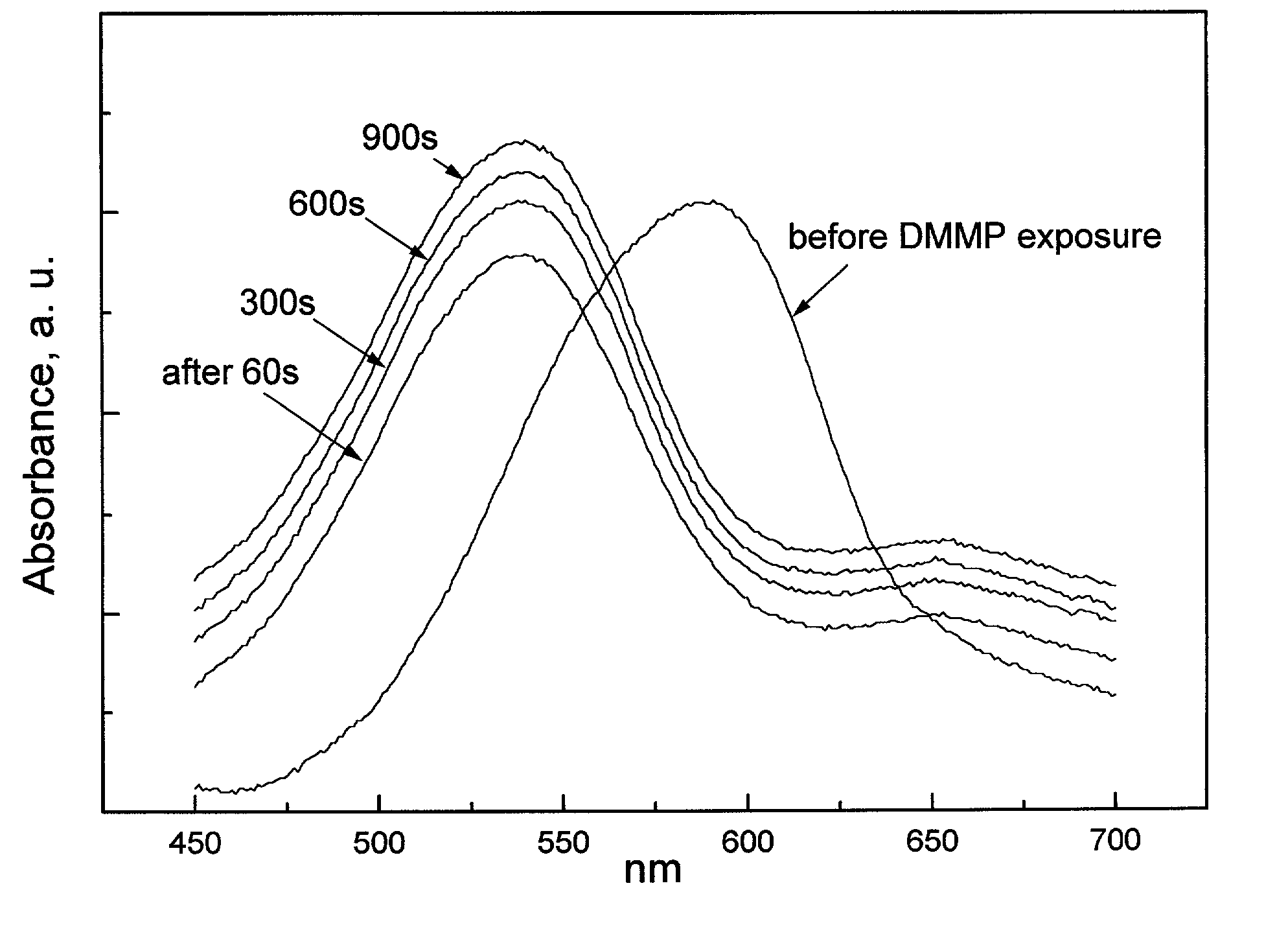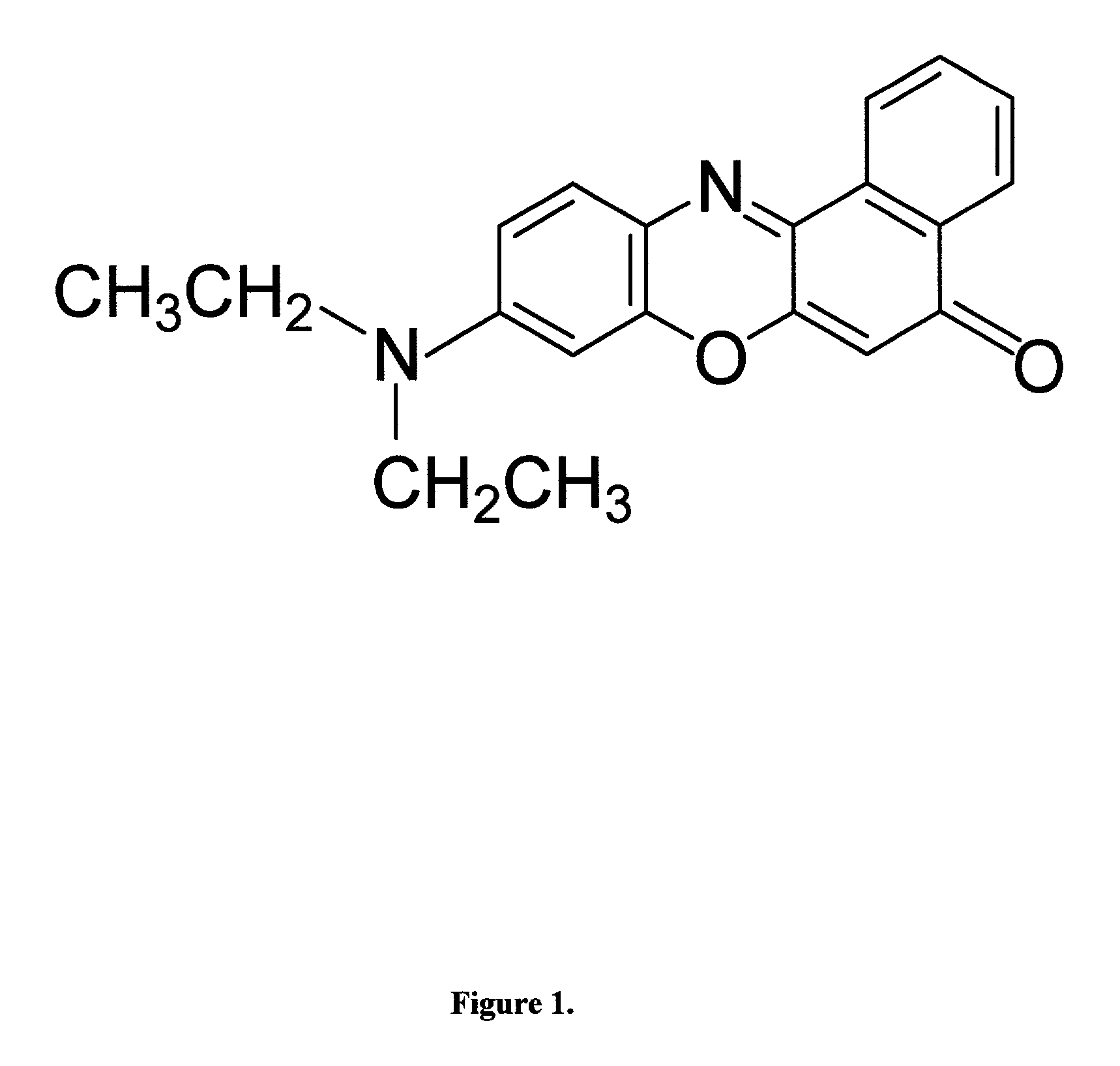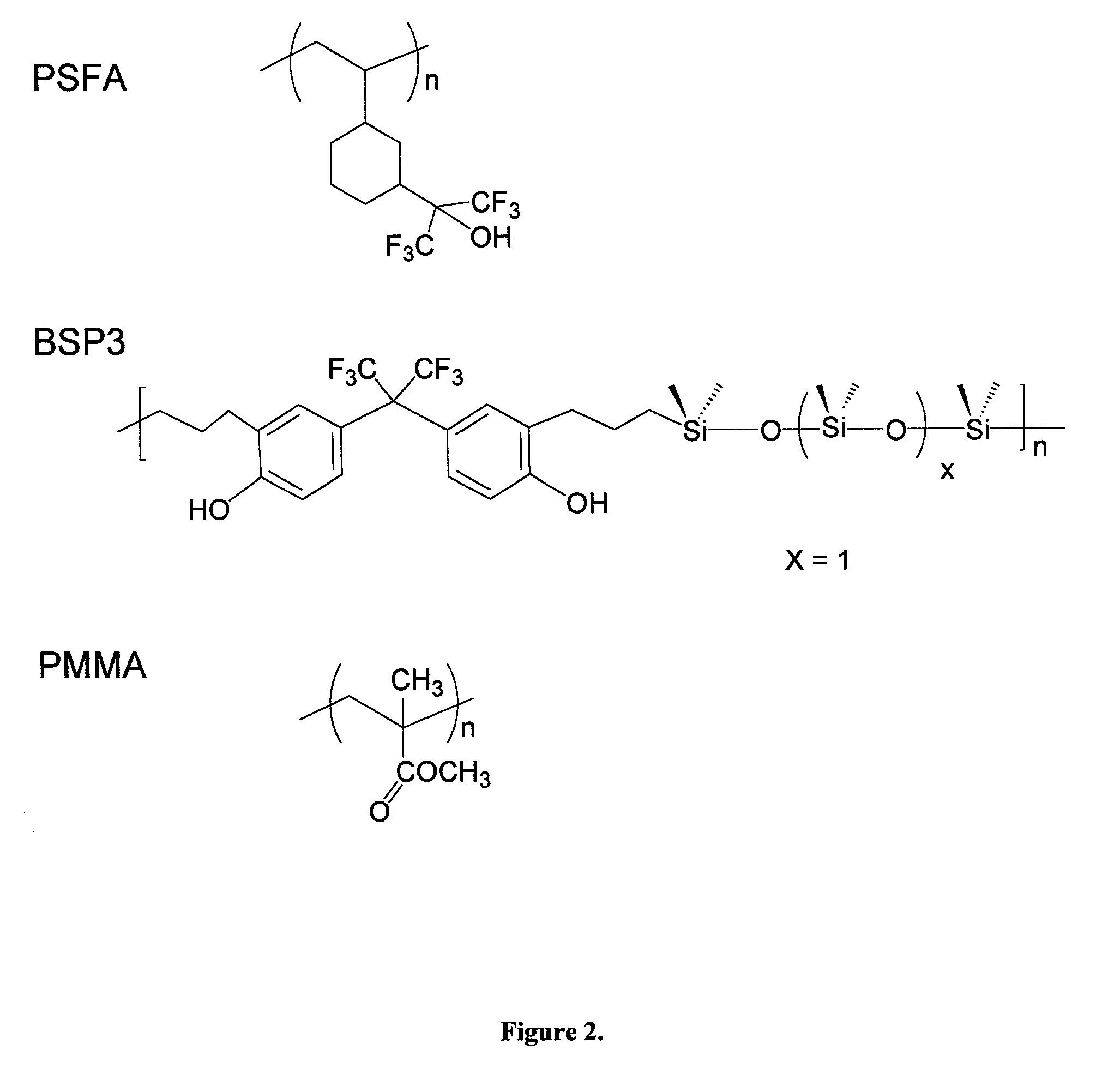Fluorescence-based method for detecting of basic gases
a fluorescence-based and basic gas technology, applied in the direction of chemical methods analysis, instruments, analysis using chemical indicators, etc., can solve the problems of complex laboratory equipment and traditional methods of quantitative detection of analytes based on gas chromatography and mass spectrometry, and achieve the effect of improving the performance of chemical sensors of basic gases
- Summary
- Abstract
- Description
- Claims
- Application Information
AI Technical Summary
Benefits of technology
Problems solved by technology
Method used
Image
Examples
Embodiment Construction
[0026] The invention provides a new method for detection of basic gases employing fluorescence of a solvatochromic dye isolated in a matrix of the hydrogen bond acidic polymer. The polymer matrix and solvatochromic dye are chosen such to maximize the influence of the molecules of the basic gases under detection on the fluorescence light signal from the sensitive material. The proposed general of detection of molecules of basic gases can be used for the design of many different chemical sensors and fluorescence-based devices.
[0027] In one preferred embodiment the dye and polymer matrix are chosen such that the hydrogen-bond interaction between them results in depression of the fluorescence yield of the sensitive material prior its interaction with the molecules of basic gases. Then interaction between the molecule of basic gases and the acidic polymer matrix breaks the hydrogen bond of the dye with the polymer matrix "releasing" the dye and returning it back into the state with a low...
PUM
| Property | Measurement | Unit |
|---|---|---|
| concentration | aaaaa | aaaaa |
| distance | aaaaa | aaaaa |
| fluorescence | aaaaa | aaaaa |
Abstract
Description
Claims
Application Information
 Login to View More
Login to View More - R&D
- Intellectual Property
- Life Sciences
- Materials
- Tech Scout
- Unparalleled Data Quality
- Higher Quality Content
- 60% Fewer Hallucinations
Browse by: Latest US Patents, China's latest patents, Technical Efficacy Thesaurus, Application Domain, Technology Topic, Popular Technical Reports.
© 2025 PatSnap. All rights reserved.Legal|Privacy policy|Modern Slavery Act Transparency Statement|Sitemap|About US| Contact US: help@patsnap.com



